Let’s focus today on the division which has “spearheaded” the American advance through Cotentin, the 3rd Armored Division.
FORMATION
3rd Armored Division was activated on April 15th, 1941, in Camp Beauregard, Louisiana, from cadre taken from 2nd Armored Division. It trained on M2 Light Tank (a.k.a Mae West) as well as a few antiquated French Renault FT-17. On September 1941, the division suffered a massive loss of men, with 900 men being transferred as cadres to the newly formed 5th Armored Division, and more than twice that number, aged over 28, being released from service. Yet, when the Japanese attacked Pearl Harbour a few months later, many of the latter would volunteer back with the division.
Although already organized by the time of Pearl Harbour, 3rd AD remained in the USA while its two older siblings, 1st & 2nd AD, were shipped to the UK then went to war in North Africa in the wake of Operation Torch. It kept training, but also provided the nucleus of trained tankers for new units created with the expansion of the US Armed Forces in 1942: 5th, 6th, 7th, 8th, 11th & 12th Armored Divisions, 703rd Tank Destroyers Battalion, various armored headquarters, …Early in 1942, the division acquired brand new, although already obsolete by European & North African warfare standards, M3 Medium Tank (a.k.a M3 Lee). On July 26th, 1942, thirty trains moved “Bayou Blitz“, as the 3rd AD was nicknamed by then, from Lousiana to California to be the first division to attend the new Desert Training Center for armored troops. It was there, in the deadly Mojave Desert that General George Patton had decided to train his troops for deployment in North Africa for, as he told his officers with quite some ‘insight’:
“The war in Europe is over for us. England will probably fall this year. Our first chance to get at the enemy will be in North Africa. We cannot train troops to fight in the desert of North Africa by training in the swamps of Georgia. (…) The California desert can kill quicker than the enemy. We will lose a lot of men from the heat, but training will save hundreds of lives when we get into combat.“
There, in facilities which still didn’t exist when they arrived and under a 55°C sun, 3rd Armored learned its trade for the next 3-4 month on Stuart & Lee tanks. It was during its stay in the DTC that 3rd Armored Division passed under command of General Leroy H. Watson, when its predecessor General Walker was promoted to corps command in August.
In late 1942, the division was back on the East Coast, in Virginia, its men expecting to be shipped to North Africa anytime. But the convoy battles were still raging in the Atlantic, and the German U-Boots were still taking a heavy toll on Allied ships, delaying 3rd AD‘s transfer oversea. The war in North Africa came to an end in May 1943 and England hadn’t fallen. And by July 1943, 3rd AD still hadn’t even left the USA while 2nd AD participated in Operation Husky, the invasion of Sicily …
COTENTIN
3rd Armored was finally shipped to the ETO, landing in England in September. Yet, unlike all the other armored divisions still being organized and trained, 3rd Armored wasn’t reorganized along the line of the new September 2nd, 1943’s pattern. Based on the experience acquired in North Africa, it had been decided to reduce the number of tanks per division, but 1st, 2nd & 3rd Armored were exempted, and thus were from then referred to as “heavy armored divisions”, as opposed to the new “light armored divisions”. In England, the division trained for the upcoming invasion of France.
![2ugB4vL[1]](https://eugensystems.com/wp-content/uploads/2017/07/2ugB4vL1.png)
Generals Eisenhower and Montgomery, as well as Air Chief Marshal Tedder, observing a 3rd Armored‘s exercise alongside its commander, General Watson.
If the men from 3rd Armored ever resented being kept away from combat for so long, they would now get their money’s worth of fighting: from then on, the division will be involved in the bloodiest American battles in Normandy, “spearheading” the way for the infantry through the Cotentin’s bocage, then within the ruins of Saint-Lô. And taking heavy losses in men and vehicles in the process, especially in close combat in those cramped battlefields.
![Zaloga1May07_006[1]](https://eugensystems.com/wp-content/uploads/2017/07/Zaloga1May07_0061.jpg)
Faced with the same problem, 3rd Armored‘s engineers came up with a solution quite similar to the Cullin’s Device found on the 2nd Infantry Division‘s Rhino tanks. Yet the triangular shape of the T2 Douglas Cutter is a trademark of the 3rd AD.
3RD ARMORED HEADS EAST
After the “Hedgerow Hell” and the battle of Saint-Lô, 3rd Armored could have expected some rest … but was ordered to Coutances instead immediately after the liberation of (what remained) of Saint-Lô. It was on that occasion that, on July 28th, a major traffic congestion froze 3rd AD‘s rear echelons, preventing most of the division’s movements: a single Task Force was sent forward, but failed to accomplish any of its objectives and the division couldn’t renew the attack before having regrouped two days later.
For that failure, on August 3rd, Eisenhower not only stripped General Leroy L. Watson from command of his division but also demoted him to Lieutenant-Colonel. “Ike” later commented that Watson accepted the decision “without the slightest bitterness“, only requesting to be sent to a combat infantry outfit. He would later prove himself again, ending the war commanding another division, an infantry one this time. Command of the 3rd Armored was given to General Maurice Rose on August 7th.
From August 13th, the division was ordered East, taking part in the race to close the Falaise pocket. The next day, Combat Command A‘s advanced element, Task Force “X”, came in contact with a strong defensive line held by units from the crack 1. & 9. SS-Panzer, near Rânes, South of Falaise. Not only TF “X” couldn’t break through that wall, but soon went from hunter to prey: all day, the men from TF “X”, including staff officers & cooks, were on the firing line fighting off SS attacks, only supported by the USAAF’s Thunderbolts & Lightnings while the rest of the division was charging to the rescue. On August 15th, 3rd Armored was pushing toward Frometel against the heaviest resistance they’ve met so far in Normandy. Regrouped again on August 18th, the division was barely given time to catch its breath before being sent toward the Seine.AFTER NORMANDY
3rd Armored crossed the Seine River on August 25th, and raced through Northern France on the heels of the retreating Germans, trapping some 50.000 of them in the process. On September 2nd, it entered Belgium. And on September 12th, it breached the Siegfried Line and invaded Germany, (falsely) trumpeting to be the first to do so since the age of Napoleon.
![tumblr_og0eh4QLC81rqpszmo1_1280[1]](https://eugensystems.com/wp-content/uploads/2017/07/tumblr_og0eh4QLC81rqpszmo1_12801-1024x476.jpg)
3rd Armored‘s M4 in Spontin, Belgium (September 1944). The tank is named … “Freedom Force“, you can’t make this up! 🙂
The division ended the war in Saxony.
THE 3RD ARMORED DIVISION INGAME
3rd Armored starts in phase A with lowest of all economy, to end up in phase C with the highest one. With all its infantry coming with armored transport, little tanks by themselves, “Spearhead” packs a lot of firepower.
Yet, those precious, and especially expensive, infantrymen are best not wasted in urban warfare, where the extra-firepower of their half-tracks would be mostly negated, and the latter exposed to enemy infantry anti-tank weapons at close range. On open fields though, a platoon of mechanized infantry advancing with its M3 half-track is a force to be reckoned with, especially in early game.
To support the Armored Rifles in phase A, 3rd Armored can field a wide range of vehicles to compose an early game’s combined-arms force: M5A1 light tanks and even a couple of M4A1 medium tank, M8 combat recon, M8 Scott assault guns, self-propelled anti-aircraft artillery & mortars, … It can also count on Major Charles ‘Bazooka Charlie’ Carpenter’s L-4 Grasshopper, dubbed “Rosie the Rocketeer” and famously armed with six bazookas for a unique combination of observation and ground support. A wide array of choice … but to be selected carefully due to the division’s weak early economy.
In phase B & C, more advanced M4 become available and in greater number while the division’s economy allows for more and more to be fielded: M4A3(75)W, M4A3(76)W with its much more effective 76mm gun, up-armoured M4A3E2 Assault Tank (more commonly known as “Jumbo”), but also M4A1 OP artillery observation post and Calliope rocket-launchers. Enough to keep the enemy under an increasing pressure …

![ltm2a2[1]](https://eugensystems.com/wp-content/uploads/2017/07/ltm2a21.jpg)
![halftracksfiringatDesertCenter[1]](https://eugensystems.com/wp-content/uploads/2017/07/halftracks20firing20at20Desert20Center1.jpg)

![MauriceRose[1]](https://eugensystems.com/wp-content/uploads/2017/07/MauriceRose1.jpg)
![p011271[1]](https://eugensystems.com/wp-content/uploads/2017/07/p0112711-300x251.jpg)
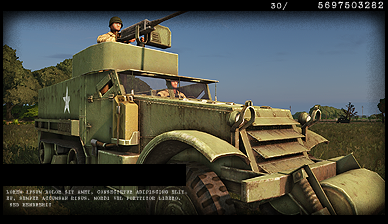
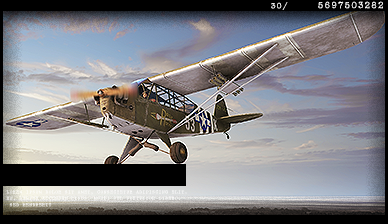
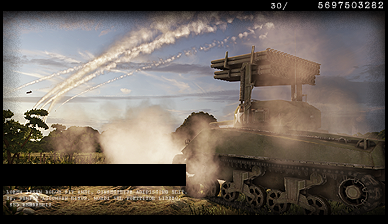
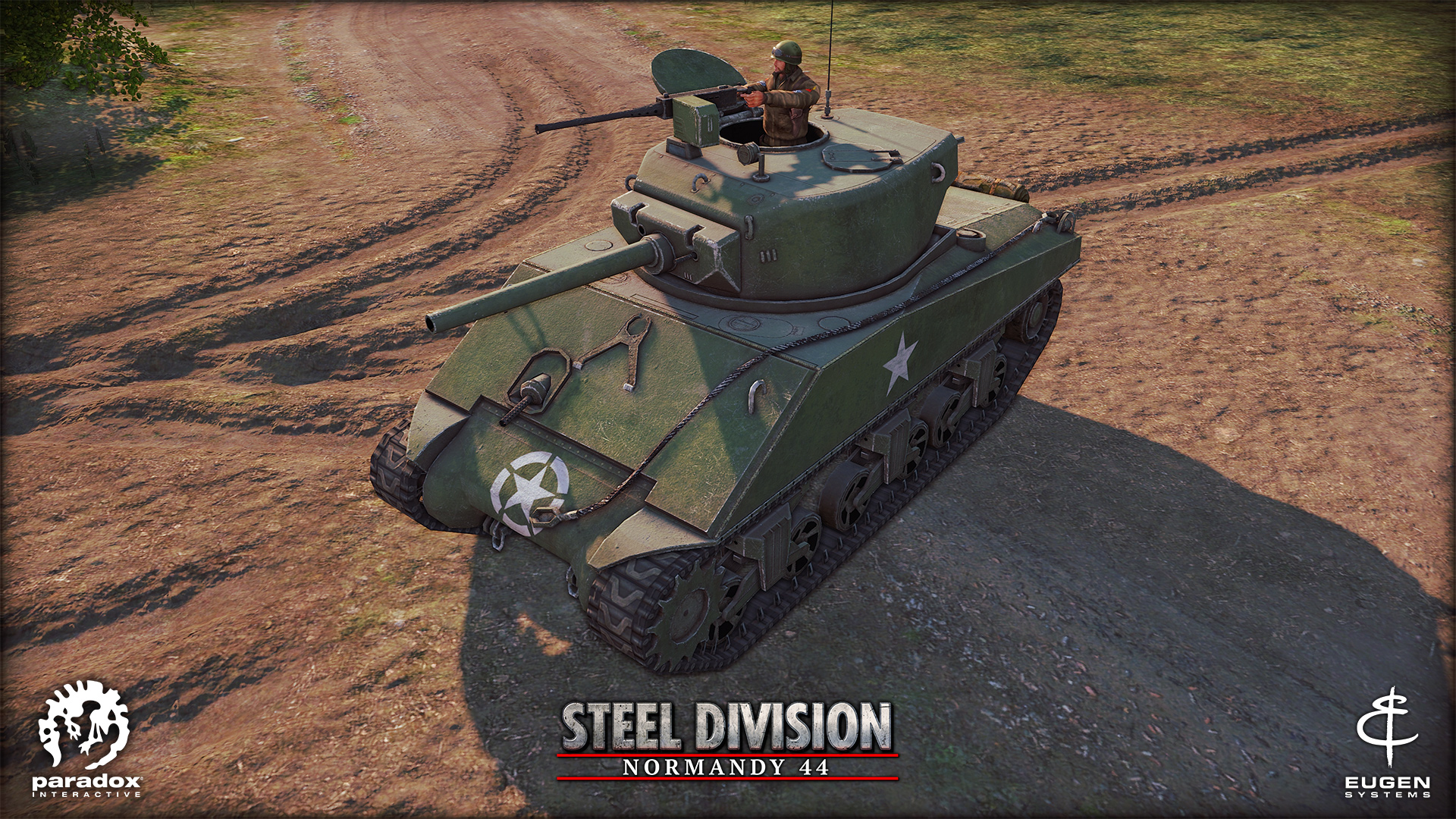
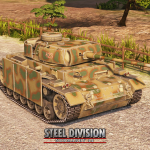

No Comments